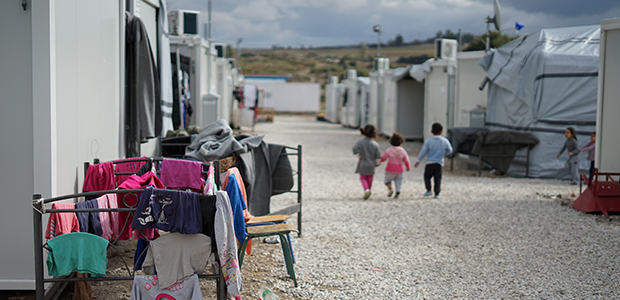Blog
Seeking asylum from nowhere— how origin shapes the context of reception
Afghanistan is the world’s newest nowhere, a predicament that will shape the evacuation and resettlement prospects for millions of people for the foreseeable future.
What does it mean to call Afghanistan a ‘nowhere’? As of 14 April 2022, the United States and allies do not recognize the Taliban-controlled government as a legitimate representative of the country. Consequently, the Afghan Central Bank’s assets remain frozen, exacerbating a humanitarian crisis within the country.
Meanwhile, those who have escaped remain in limbo, uncertain of whether they’ll be able to access affordable housing or feed themselves once support from resettlement agencies runs out. What futures await these asylum seekers? One way to answer this question is to look to how past forced migrants have fared.
Exodus from Afghanistan and Viet Nam since the 1970s
Beginning in 1979, the Soviet invasion of Afghanistan sparked an exodus of millions, most to the neighbouring countries of Iran and Pakistan. Many who fled remain in these countries today, and are still without secure rights or legal status.
This persistent uncertainty is even more striking when we compare the Afghans who fled in the 1980s with Vietnamese who did so after reunification in 1975. Although mass migration out of Viet Nam and Afghanistan began at roughly the same time, the camps that once housed Vietnamese asylees in Indonesia, the Philippines, and Hong Kong have closed. And, the Vietnamese former asylees have largely resettled in third countries.
Even for successfully resettled Afghan and Vietnamese migrants, their life opportunities continued to diverge after they arrived in the US and other countries of resettlement. Although Afghan forced migrants in the US had higher rates of English competence and college completion than Vietnamese (as well as Cubans and Hmongs), their median family income is lower than that of these other groups.
In Canada, foreign-born Afghans earn far less than other migrants and have a lower probability of being employed. By contrast, foreign-born Vietnamese in Canada hold university degrees at higher rates than do other childhood migrants and those born in Canada. Even at similar points in time after arriving, migrants from Afghanistan had made fewer economic inroads than migrants from Viet Nam.
Race, Islamophobia, and refuge
Islamophobia — on the rise since 9/11 — likely contributes to the divergent outcomes between forced migrants from Afghanistan and those from Viet Nam.
A second important, related factor is that security concerns shape the willingness of states to embrace or deny border crossers. Afghanistan and Viet Nam were both entangled in the Cold War theater of the 1970s and 1980s, but the collapse of South Viet Nam meant that the US had to win the post-war. It did so by providing militarized refuge to its erstwhile allies, even as it continued to wage war on different terrains. Afghanistan was one such terrain, but it did not fall. Afghan refugees therefore did not serve the same function as Vietnamese ones for recuperating US identity and reputation.
Unfolding crises in a period of fragile border stasis
Host countries’ concerns about security matter deeply for the treatment of people leaving Afghanistan today, albeit in a much different way. Mass migration out of Viet Nam and Afghanistan in the late 1970s occurred in the context of decolonization efforts around the world. Borders were in flux and the world map changed considerably within a short span. But the world map has remained remarkably static since the 1990s, with very few exceptions. Moreover, it has been in the interest of those in the club of countries to keep borders in place to avoid bloodshed and instability.
The fixedness of the world map for the last three decades means that some places, such as Somaliland, continue to be nowheres that are denied statehood, even though they meet all the criteria set out by documents such as the Montevideo Convention.
This state of affairs sheds light on two present crises.
First, the unfolding catastrophe in Ukraine threatens the status quo of fixed borders. The Russian attempt to redraw borders is perhaps one reason Germany has upended its longstanding position of refusing to send weapons to a conflict zone. Ukraine is an important political ‘somewhere’, and its residents and citizens urgently need aid. Security concerns about the potential redrawing of the world map have made Ukrainians ‘someones’.
Second, even though Afghanistan appears as a country on the world map, its government remains unrecognized by the UN. The country continues to be locked out of official negotiations, exemplifying how state actions can create bureaucracies of displacement.
By contrast, the EU has shown unprecedented support for Ukrainian forced migrants following the Russian invasion, going so far as to activate its Temporary Protection Directive (TPD) for the first time. Under TPD, Ukrainians are granted immediate protection and have rights to visa-free travel, work, education, housing, and health care. Crucially, Ukrainians have the right to a residence permit in any EU country they choose for one year, with the potential to extend to three years. These temporary protections only apply to Ukrainian nationals or those with international protection in Ukraine prior to the war. These protections were never enacted for forced migrants hailing from countries outside of Europe, such as Syria and Afghanistan.

In an ideal world, the origin of forced migrants seeking a safe destination would not be as much of a determining factor in their future prospects. To reduce inequality between groups of migrants, more needs to be done to support Afghan forced migrants. Moving beyond Temporary Protected Status, a way forward in the US may be to look to the ‘Wet-Foot, Dry-Foot’ policy with Cuba that provided permanent protections for people from a country which the US similarly did not recognize.
Who one’s neighbour is also matters. For Afghans, the neighbouring countries of Iran and Pakistan have not provided substantive legal or economic stability. Ukrainians seeking such security have crossed into neighbouring Poland, Slovakia, Romania, Hungary, and Moldova, the latter of which is one of the poorest in Europe. The EU has sent emergency funds to support these countries. Yet a one-size-fits-all solution of funding neighbouring (or even faraway) countries to accept forced migrants may not be desirable, particularly if it is undertaken as a way to prevent border crossers from reaching the Global North.
Short of comprehensive policies to address the fallout of the US withdrawal from Afghanistan, the ongoing treatment of the country as a nowhere can mean that Afghans will similarly be treated as no ones.
Sarah Dean is a student of sociology and Arabic studies at Williams College.
Phi Hong Su is a Visiting Assistant Professor of Sociology at Williams College. She is the author of The Border Within: Vietnamese Migrants Transforming Ethnic Nationalism in Berlin (Stanford University Press, 2022).
The views expressed in this piece are those of the author(s), and do not necessarily reflect the views of the Institute or the United Nations University, nor the programme/project donors.
 Join the network
Join the network










